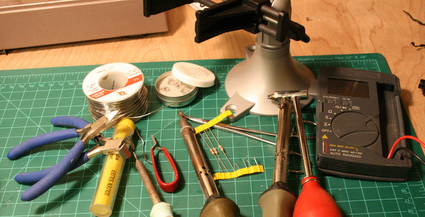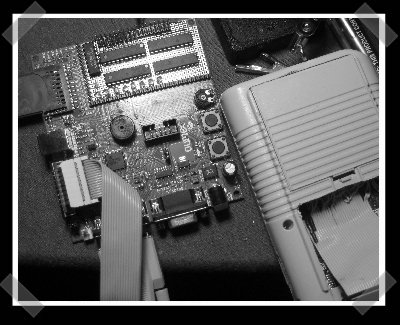
[Jose] thinks that the Little Sound DJ is too expensive and hard to find. Now he’s trying to build an inexpensive USB programmable GameBoy cartridge. Currently he’s working with a LPC2148 development board. It’s not quite clear where he’s going with this. He certainly wants to add USB programming, but it seems that he’s trying to hack a mp3 decoder in there as well. [update: yes, I know how to spell cartridge!]
Author: Will O'Brien805 Articles
Followup: Soldering How-To
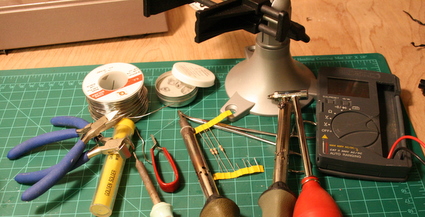
The response to the soldering How-To was fantastic. You guys seem to want more and we’re looking forward to bringing you more How-Tos in the near future. If there’s a specific topic you’d like to see, let us know and I’ll see what we can do.
[justin] suggests picking up a flux pen with your next electronics order. I’ll probably take him up on that idea. [xrazorwirex] suggests using a pure form of alcohol like everclear for cleaning boards. I keep a few bottles of tape head cleaning solution – it won’t leave residue like rubbing alcohol and you don’t have to be 21 to buy it. [MattS] suggests cutting your leads and then soldering to prevent corrosion later on. This usually isn’t a problem for small projects, but it’s a good idea for anything that’ll see a less than ideal environment later on. [Josh Malone] is fond of his Hakko 936 soldering iron. I have to agree with everyone that a temperature controlled iron is the way to go. I was very happy with my Tenma which lasted well over 10 years. [David Moisan] suggests buying purpose made soldering sponges from MCM to preserve the plating on your soldering tip. Considering the varied contents of kitchen sponges, this is definitely a good idea. [Forrest M. Mims III] freaked me out a bit when he commented on the post – he notes that he taught his son to solder when he was 4 years old! I’m a bit more conservative, but lets be honest – I learned how to solder from his books when I was a kid.
Speaker As A Microphone

[Nathan] sent in his speaker microphone project. Speakers and microphones are physically similar – usually mics are much smaller to allow decent high frequency response. In this case, [Nathan] wanted something to pick up kick drums or bass guitars, without the cost of a commercial version like the subkick. It’s built around a dual coil 6.5 inch subwoofer. The passive circuit design allows the coils in the speaker to be configured for differing impedance, phase and isolation.
Stroboscope LED Fan Clock

[sprite_tm] sent in one of his latest little adventures – and I love it. To create his stroboscope fan clock, he put a couple of red and green clock hands onto a standard PC fan(I love Panaflo fans), then he built a circuit to strobe a RGB LED to create a set of virtual clock hands on the spinning fan. An ATTiny2313 does all the work, with the help of some transistors to drive the LEDs.
How-To: Introduction To Soldering
It’s been a while since we’ve had a fresh How-To on the Hack-A-Day, and frankly we’ve missed them. To get things rolling, [Eliot] and I wanted to build a good knowledge base to help you hack your own stuff. I know that soldering won’t be new to many of our readers, but everyone has to start sometime. Our hope is simple: that this new series of How-To’s will help inspire new and experienced hackers alike.
High Power TVBGone
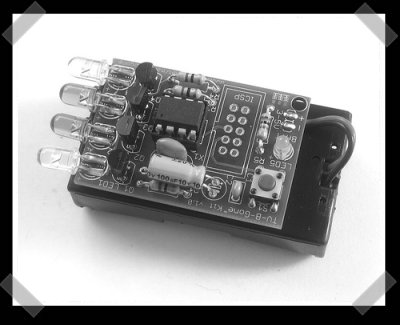
[Ladyada]’s been busy lately. [bladdo] wrote in to tell me that she put together an extra powerful kit version of the TVBgone. This one’s supposed to be good for over 100 feet. If you really, really want to get your ass kicked during the super bowl, this baby in a sports bar should do the trick. There’s an optional programming header, so you could program it to turn every TV onto the SciFi channel.
Remember, I want to hear about your hacks! Use the tips line to send ’em in.
1-wire Thermostat Control
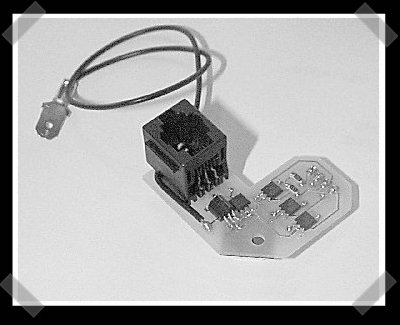
For some reason, computer controllable thermostats are pretty freakin’ expensive. I found a reference to a 1-wire thermostat in this(mirror) sample senior project on home automation. It turns out that Dallas Semiconductor put one together a while back as an application for their TINI platform. (web-application server on a chip). The write-up has since vanished from their site, but I found it thatnks to archive.org. The thermostat used to run about $50, and a similar model still seems to be produced. The 1-wire interface is pretty simple – Maxim’s TINI board to control it: not so much. Just using the 1-wire interface with an inexpensive thermostat and controlling from a PC seems pretty viable to me. Just in case, I mirrored the 1-wire interface schematics here.

